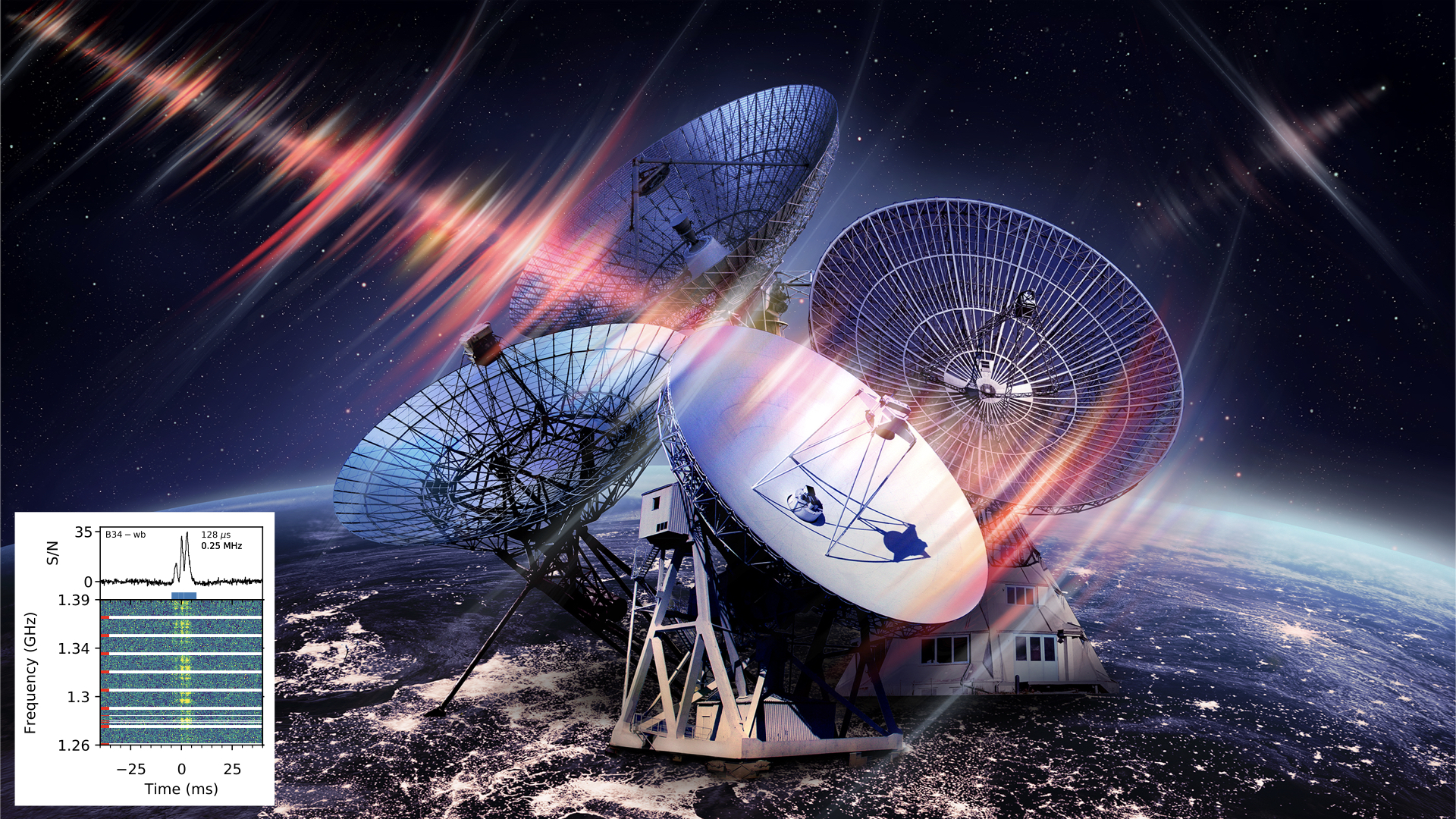Daily Image
04-01-2024Connecting repeating and non-repeating fast radio bursts via their energy distributions
| Submitter: | Jason Hessels, Franz Kirsten, Omar Ould Boukattine |
| Description: | Fast radio bursts (FRBs) are extremely energetic, millisecond-duration radio flashes that reach Earth from extragalactic distances. Broadly speaking, FRBs can be classified as repeating or (apparently) non-repeating. It is still unclear, however, whether the two types share a common physical origin, differing only in their activity rate. In a recent Kirsten, Ould Boukattine et al. paper in Nature Astronomy, we reported on an unprecedented observing campaign that targeted one hyperactive repeating source, FRB 20201124A, for more than 2000 hours using four 25−32−m class radio telescopes shown here: Onsala, Stockert, Toruń, and Westerbork RT-1. In total, we detected 46 high-energy bursts, many more than one would expect given previous observations of lower-energy bursts using larger radio telescopes. One of the bursts detected with Westerbork RT-1 is shown in the bottom-left of this image, as an example. We find a high-energy burst distribution that resembles that of the non-repeating FRB population, suggesting that apparently non-repeating FRB sources may simply be the rarest bursts from repeating sources. We also discuss how FRB 20201124A contributes strongly to the all-sky FRB rate and how similar sources would be observable even at very high redshift. |
| Copyright: | Futselaar/ASTRON |
| Tweet |  |
